SSO example with Azure AD
To use SSO with OpenID Connect we have a strategy li-authentication-openid-connect to use in the auth.connections config. With this strategy, you can use a SSO Service (AzureAD, Google, Facebook, …) which supports the OpenID Connect for authentication.
To enable AzureAD SSO for Livingdocs, add the config below to the server config in auth.connections. It creates a setup for SSO with AzureAD and shows the button for that on the login page. It is also using the existing user from Livingdocs and create an AzureAD Identity. The already written articles with this user will still be assigned to the same user. The match of the user is done with the email address.
const {nanoid} = require('nanoid')
const azureConfig = JSON.parse(process.env.auth_azure || '{}')
module.exports = {
auth: {
accessTokenTtl: '10h',
sessionTtl: '20h',
connections: {
local: {
label: 'Password',
enabled: true,
loginEnabled: true,
registrationEnabled: false,
strategy: 'li-authentication-local'
},
azure: {
strategy: 'li-authentication-openid-connect',
enabled: azureConfig.enabled || false,
loginEnabled: true,
registrationEnabled: false,
autoRegistrationEnabled: false,
connectionId: 'azure',
// Azure AD Issuer, replace the tenant with your tenant id
// example for google: https://accounts.google.com/.well-known/openid-configuration
issuer: 'https://login.microsoftonline.com/{tenant}/v2.0/.well-known/openid-configuration',
config: {
clientId: azureConfig.clientId,
clientSecret: azureConfig.clientSecret,
// Check `Configuring OpenID in Azure AD` section for a guide
scope: 'openid email profile',
async extractClaims({tokenSet}) {
const claims = tokenSet.claims()
// assert group here
await transferLocalIdentityToAzure(claims)
return claims
},
// set the access to projects with specific groups
// on the basis of the claims. This is used for new users
// which are not registered locally
// claims is a openid-connect standard claim, for available properties see:
// https://openid.net/specs/openid-connect-core-1_0.html#StandardClaims
async extractProjects({client, tokenSet, claims}) {
// return a default
return [
{
projectHandle: 'daily-planet',
groupLabels: ['owners', 'editors']
},
{
projectHandle: 'service',
groupLabels: ['owners', 'editors']
}
]
}
},
ui: {
label: 'Microsoft Login',
icon: 'microsoft-azure'
}
}
}
}
}
let db
// create a new AzureAD identity for the existing user
async function transferLocalIdentityToAzure(claims) {
if (!db) db = require('../../app/server').db
const [exists] = await db.sql`
SELECT * FROM authentication_provider_identities
WHERE connection_id = 'azure'
AND identity_id = ${claims.sub}
`
// Return if the AzureAD identity is already existing
if (exists) return
const [legacy] = await db.sql`
SELECT * FROM authentication_provider_identities
WHERE connection_id = 'local'
AND identity_id = ${claims.email.toLowerCase()}
`
// return if there is no existing local identity
if (!legacy) return
// change the existing local identity to a AzureAD identity
await db.sql`
INSERT INTO authentication_provider_identities (
id,
connection_id,
identity_id,
identity_data,
user_id
)
VALUES (
${nanoid(12)},
'azure',
${claims.sub},
${{email: claims.email, name: claims.name}},
${legacy.user_id}
)
`
}
Configuring OpenID in Azure AD
To configure OpenID in Azure Active Directory, you have to go follow the steps depicted below.
Open the Azure Portal and go to Azure Active Directory, via search bar or on the service list.
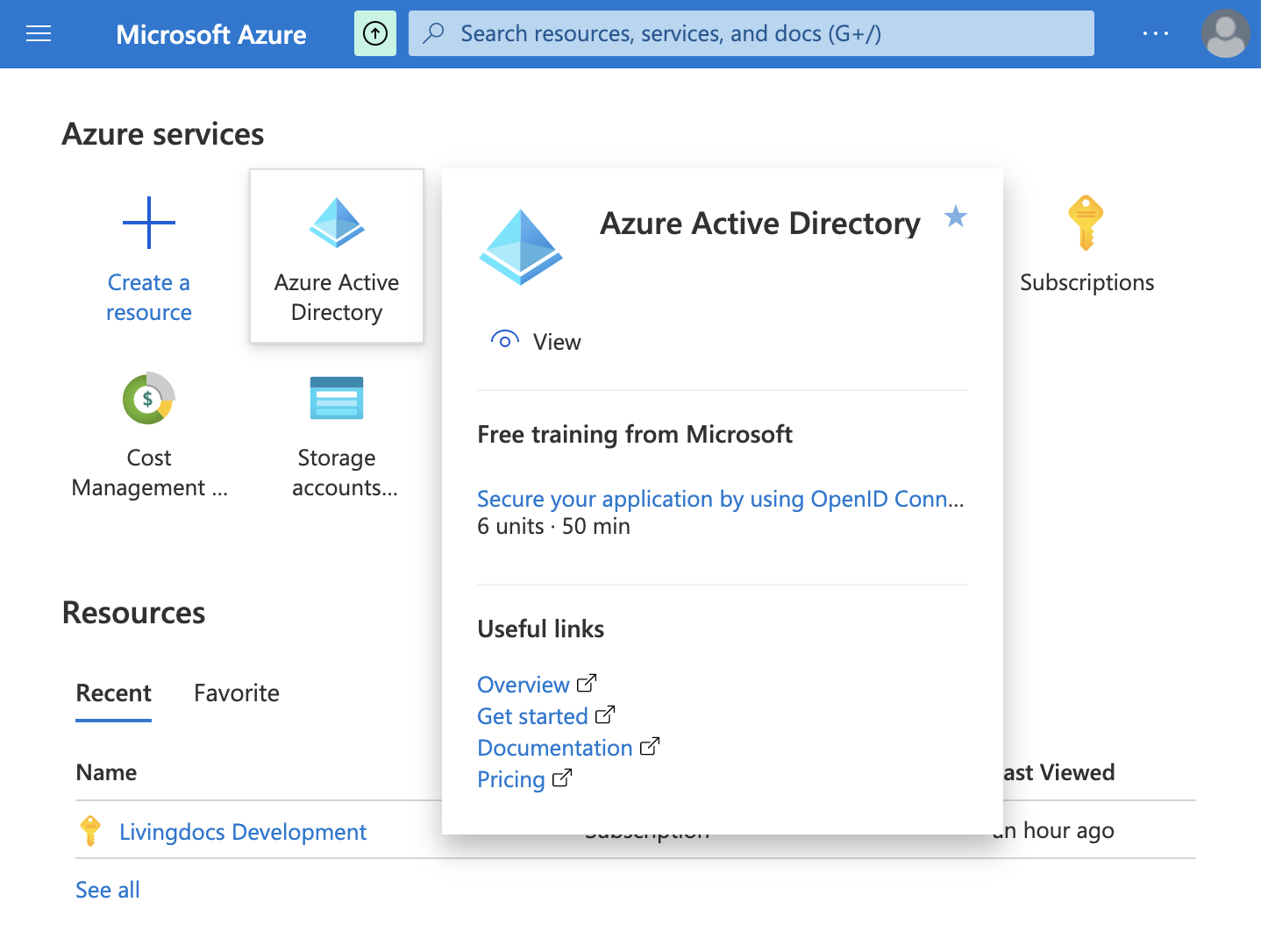
On the left sidebar, click on
App registrations. Then create a new registration with+ New registrationbutton.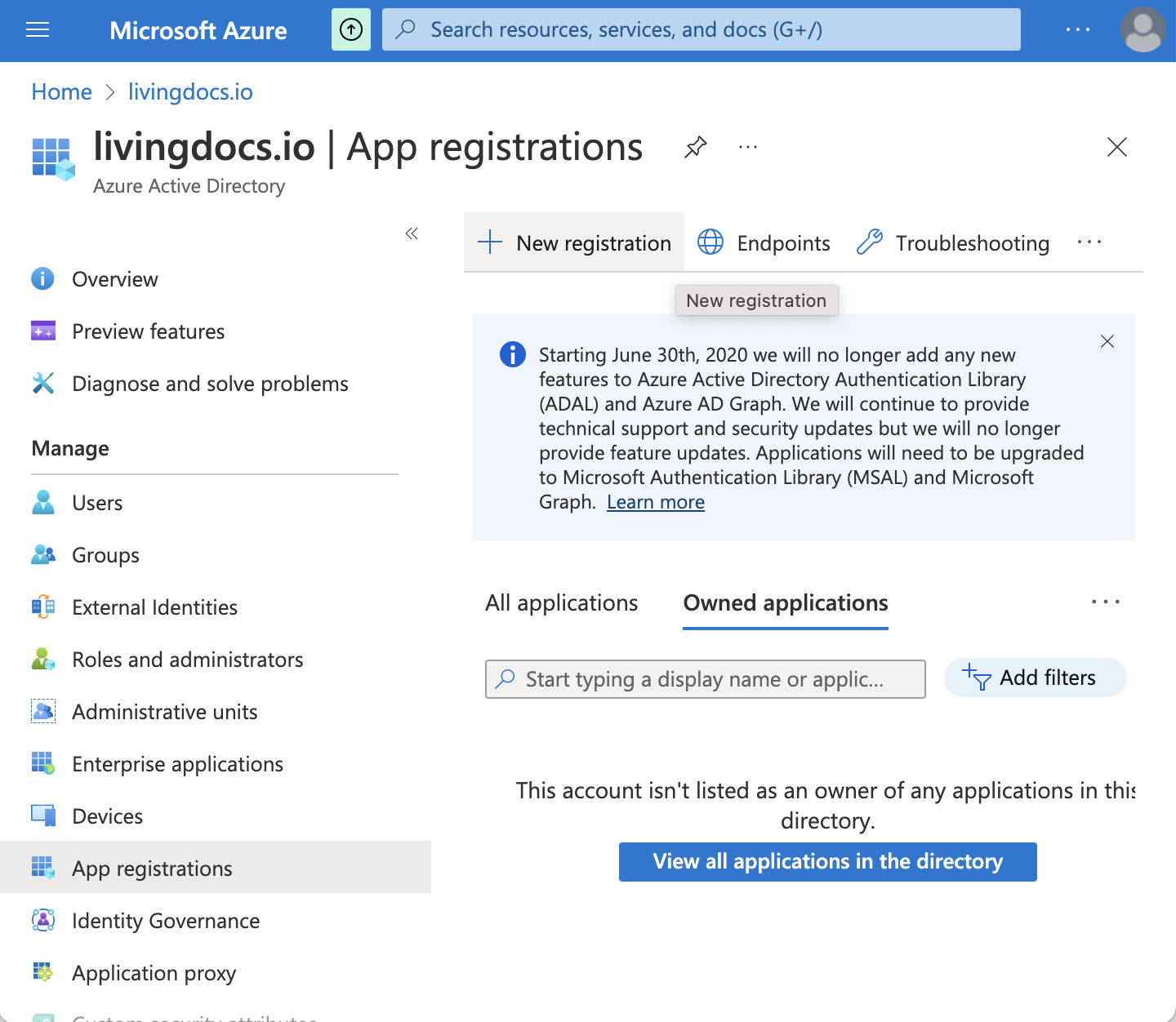
Define a name for the application and choose the access depending on your requirements (default:
Single tenant). In the redirect URI group, specifyWebin platform drop down and your redirect URI should look likehttps://<my-domain-name>/proxy/api/auth/azure/callback. Finally, clickRegisterto create the registration.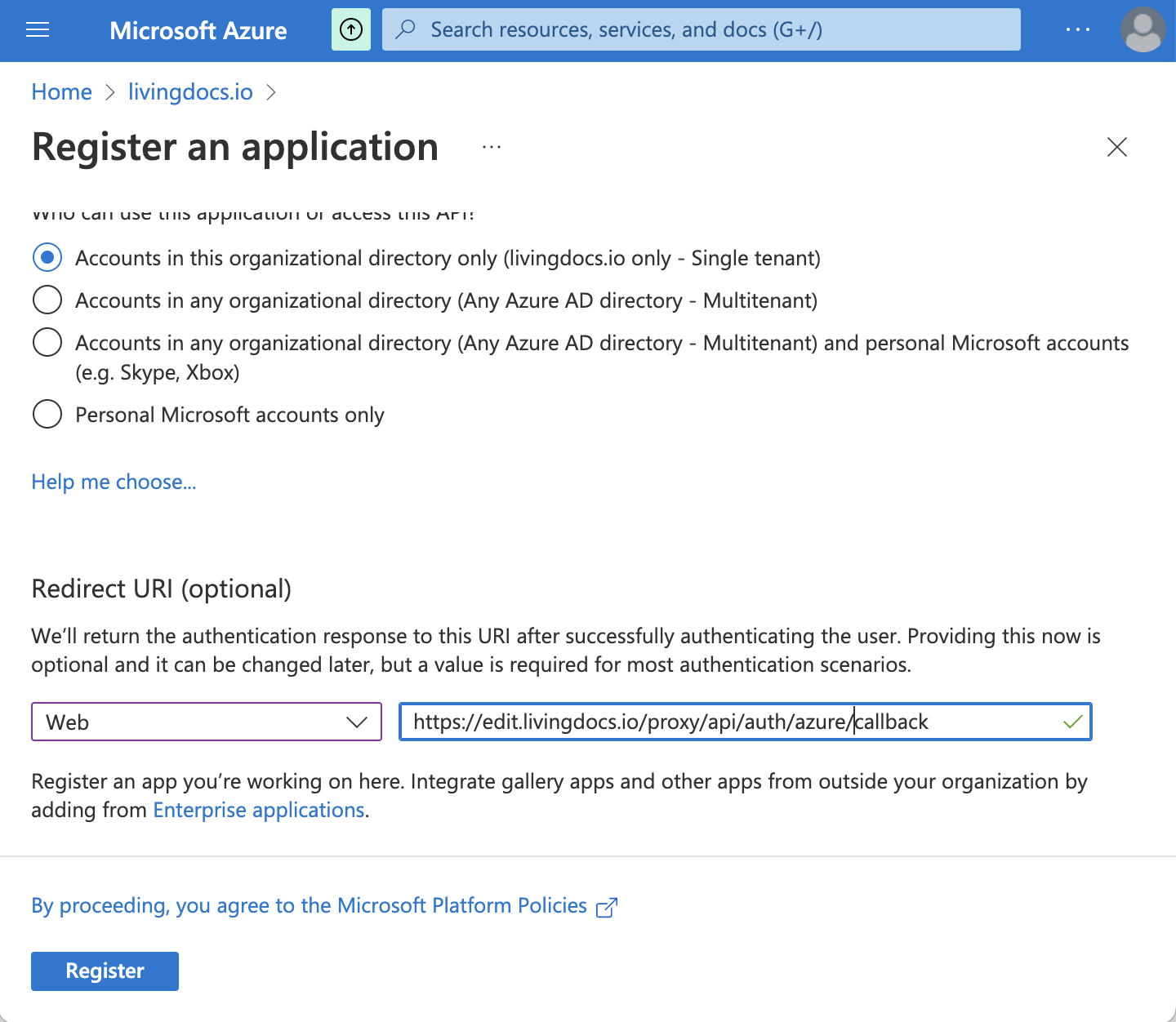
In the registration view left sidebar, go to
Authenticationmenu. EnableAccess tokens (used for implicit flows)andID tokens (used for implicit and hybrid flows), then save.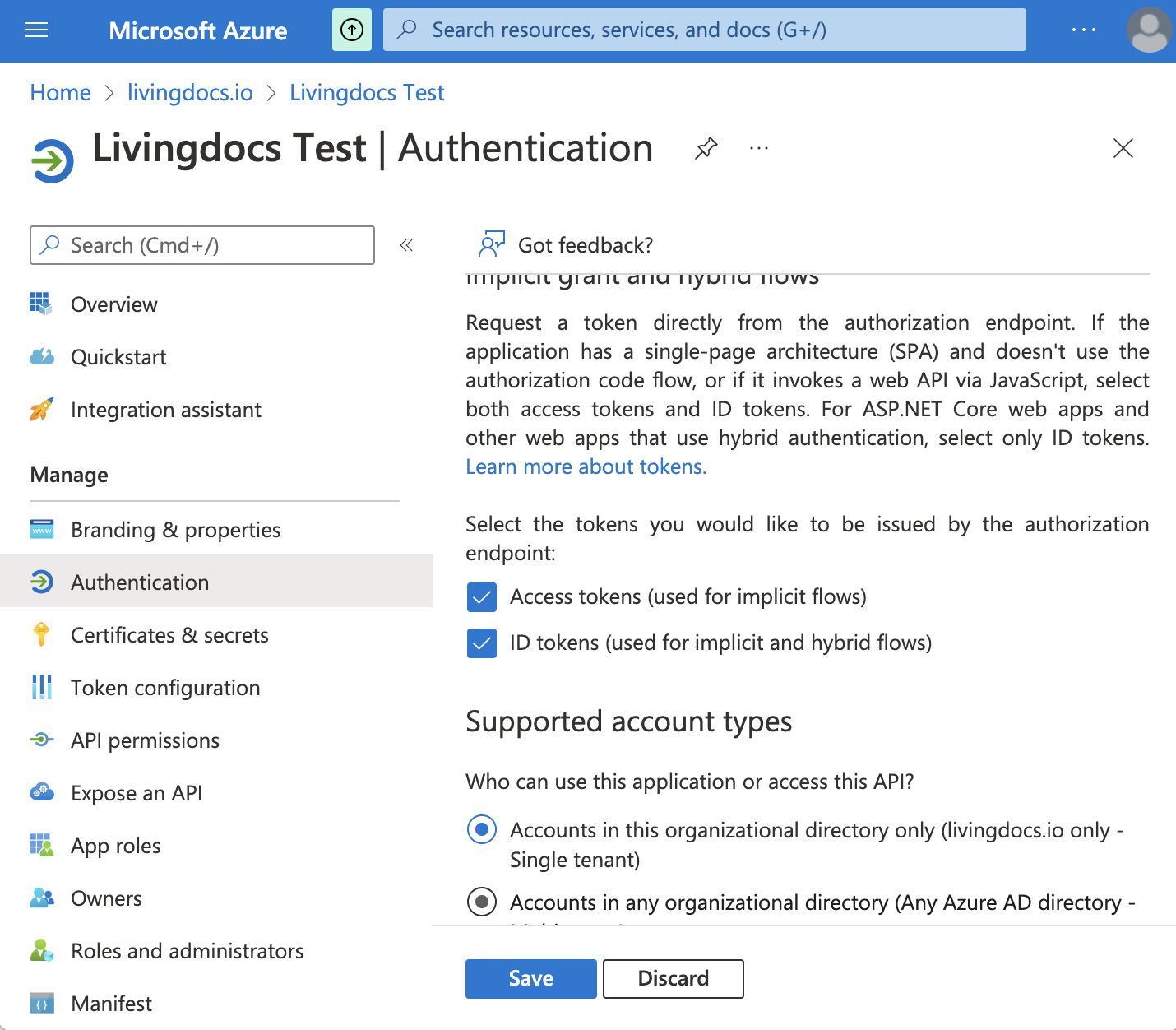
In the registration view left sidebar, go to
Certificates & secretsmenu. Add a client secret with+ New client secret, add a description to identify the secret and expiration date. FinallyAddthe client secret.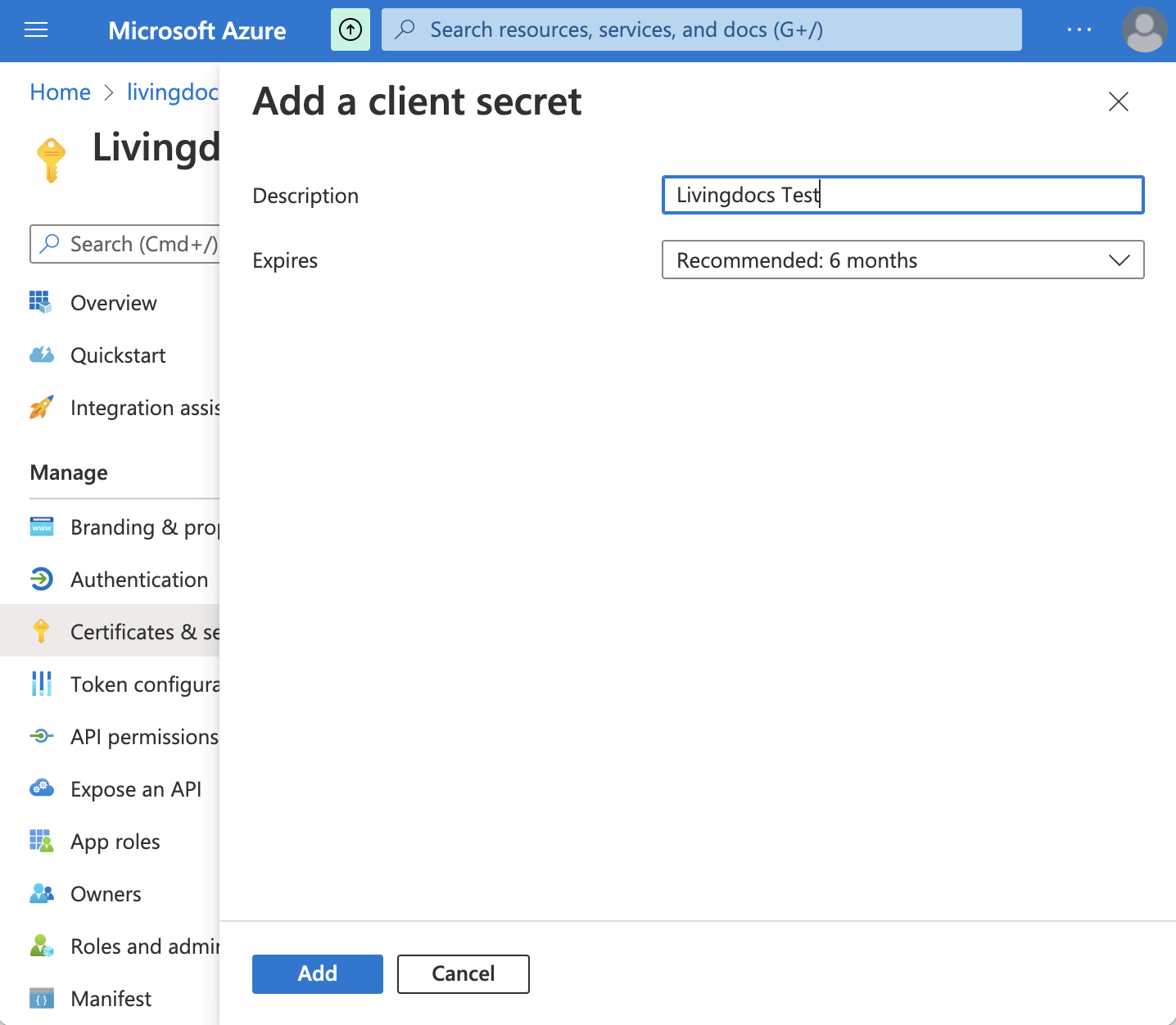
In the list of client secrets copy the newly created secret ID to use in Livingdocs Server configuration
clientSecretparameter.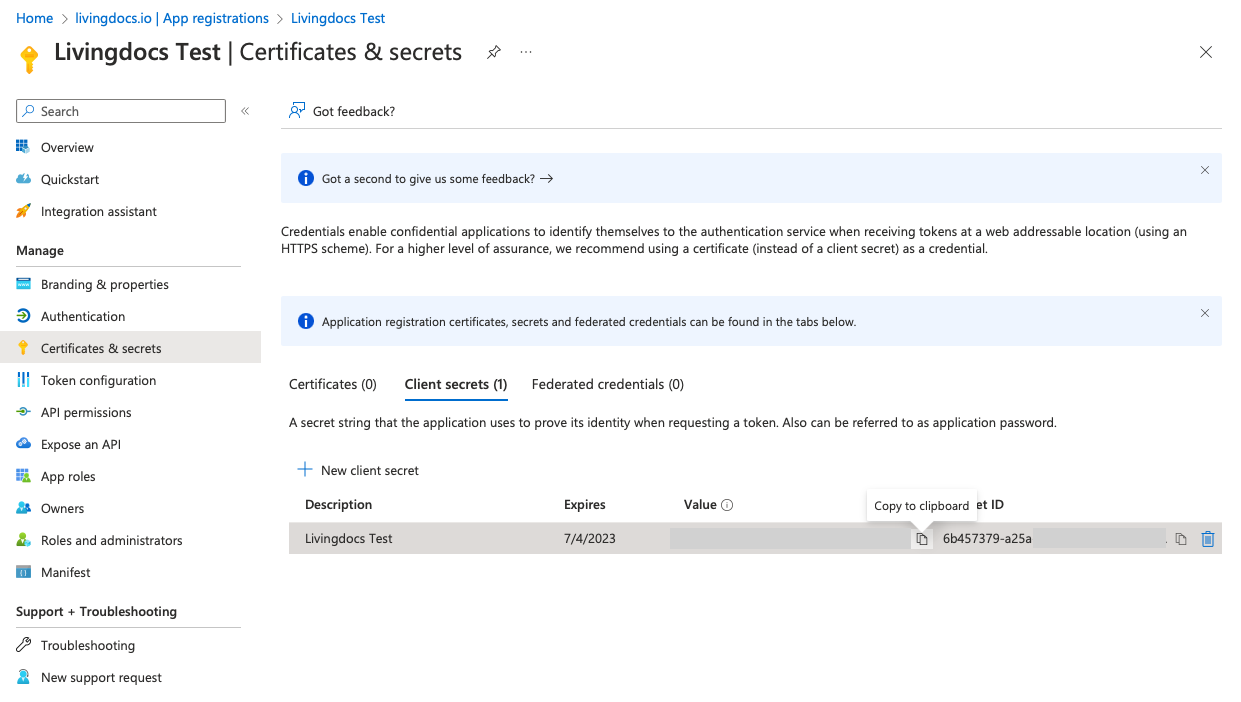
Go back to the registered app list (Azure Active Directory > App registrations) and choose the one you just created. Configure the claims used in the app registration in
Token configurationsection. You can specify AD group types and token used.
To add users or groups to the app registration go to
Configure your organization.
Go to
Users and groupson the sidebar. You should see+ Add user/groupto add the users that need access to the app.